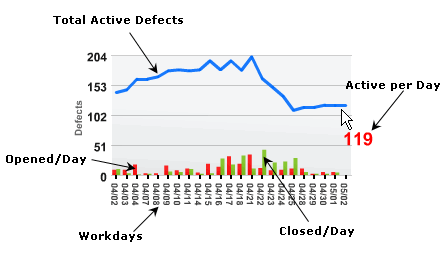Key Performance Indicators – An Overview
December 1, 2019 1 Comment
 When attempting to gauge how a project is moving along, a project manager needs to be mindful of the various pieces of data that are available pertaining to the project as a whole. These data sets may come from a variety of sources, such as defect tracking systems, financial and budget analysis, project management tools, and so forth.
When attempting to gauge how a project is moving along, a project manager needs to be mindful of the various pieces of data that are available pertaining to the project as a whole. These data sets may come from a variety of sources, such as defect tracking systems, financial and budget analysis, project management tools, and so forth.
Whenever a project manager is looking to determine how well a project is performing, the standard parlance is to rely on a certain set of metrics that denote key attributes that signify the health and welfare of the project. Generally speaking, the aggregate project health will be discernible by evaluating the various data points being provided. What is paramount from the standpoint of the project manager is to determine which metrics have the most merit and which provide some information but are less intrinsic to the project as a whole.
KPI Details
KPIs, or ‘Key Performance Indicators‘ are specific pieces of information that, when taken together, provide the best overview of the health of the project. How to determine which of the myriad of different metrics deserve to be relegated to the KPI category can be somewhat daunting and open to conjecture and debate. To dissect things further, the following can be used as a guide when determining what warrants classifications as a KPI:
- KEY – It is a major contributor to the success or failure of the project
- PERFORMANCE – It is a tangible metric that can be measured and quantified in addition to being controllable
- INDICATOR – Has a reasonable representation of present and future performance
As a simple example, a common KPI would be something like a bug count. i.e. the number of defects (bugs) inherent to a particular software application. During a particular release cycle, a project manager can easily monitor the status of the number of bugs currently filed against the project’s particular product release. Monitoring this count will produce a trend chart that can indicate how bug resolution is being handled. This information can be plotted in a chart such as the one shown below:
 This chart can show progress and extrapolation can be used to gauge what the defect rate normalizes towards and if the inherent release schedule matches well against the bug trends. An extrapolation can demonstrate a potential schedule slippage if the bug resolution rate is not meeting expectations.
This chart can show progress and extrapolation can be used to gauge what the defect rate normalizes towards and if the inherent release schedule matches well against the bug trends. An extrapolation can demonstrate a potential schedule slippage if the bug resolution rate is not meeting expectations.
Because this trend can lead to something actionable by the project manager (i.e. additional resources or scope changes) and also provides present and future performance, it falls within the definition of a KPI.
KPI Types
It is possible to categorize KPIs by type to create a more meaningful overall project assessment. This is also beneficial depending on project type and industry as various factors and stakeholder requests may determine what eventually is given the status of KPI. By categorizing KPIs by what they are meant to indicate, this can assist in the separation process. Some categorization ideas might be:
- Quantitative KPIs – Numerical values or indicators
- Practical KPIs – Interfacing with company processes or procedures
- Directional KPIs – Determining if the project is improving or getting worse
- Actionable KPIs – Can effect a change of some sort
- Financial KPIs – Cost performance measurements
There are potentially other classification types as well.
KPI Failures
Numerous reasons can lead to the failure of KPIs in addressing problems in the project or failing to spot issues. Generally speaking, some of the key reasons a KPI may not work might be:
- Not monitored effectively or mis-managed
- Project manager has insufficient clout of performing actions when KPIs indicate a problem (or fails to effectively escalate the problem)
- The rate of change of the KPI may be too slow and the problem manifests before actions can be taken
- The actions to correct problems spotted by the KPI are not performed quickly enough
- The company has too many KPIs listed to the point where they essentially just become ‘noise’
Of all the aforementioned KPI failures, the most aggregious offender is number 5. It is so easy for individuals to get caught up in a sea of metrics, that they literally bury themselves in data. This tendency becomes a self-fulfilling prophecy and they become hesitant to remove any metric for fear of missing some key piece of data. The result is a massive deluge of data of which only a small percentage is actually meaningful.
Conclusions
The need to monitor the health of the project is obvious. That is essentially the core function of the project manager. They are the vanguard of how the project is performing and must be cognizant of the various factors that could make or break their project. As such, effectively identifying, cataloging, categorizing and monitoring the key performance indicators inherent to their project is of paramount importance. The KPIs will be the best insurance the project manager can take to be able to spot problems early and take steps to remedy them before they derail the project.
